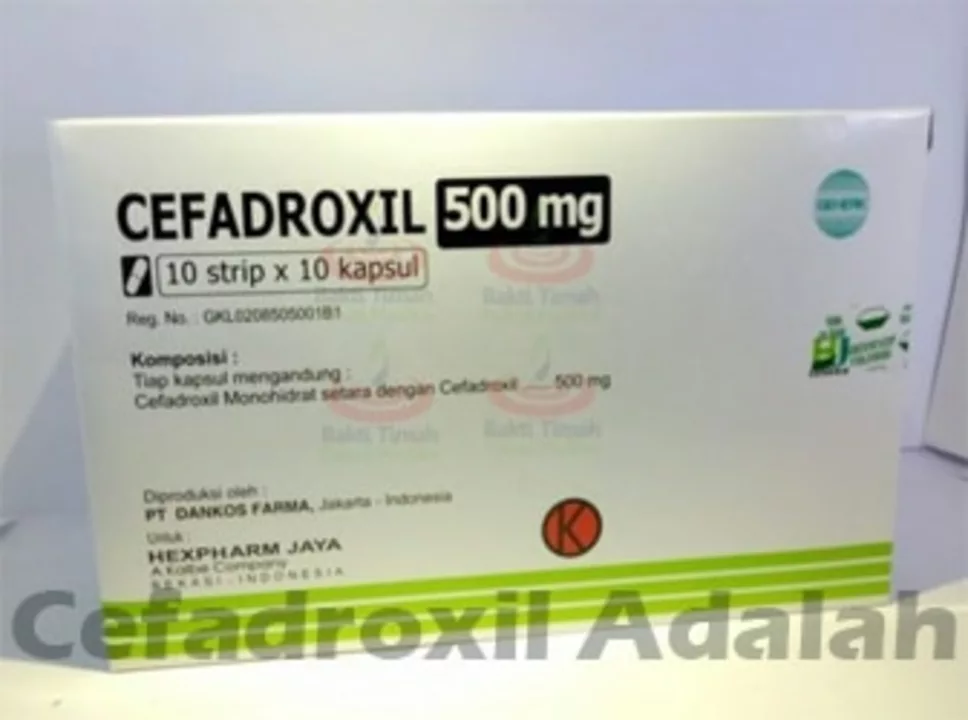As a blogger who focuses on health and wellness, I recently dove into the topic of Cefadroxil and allergies. Cefadroxil is an antibiotic used to treat various bacterial infections, but it's important to understand the potential risks for those with allergies. Some individuals may experience an allergic reaction to Cefadroxil, especially if they have a history of penicillin allergy. Symptoms of an allergic reaction may include rash, itching, swelling, and difficulty breathing. If you or a loved one are prescribed Cefadroxil and have a history of allergies, it's crucial to discuss the risks with your healthcare provider to ensure a safe treatment plan.
Cefadroxil — what it does and how to use it safely
Cefadroxil is an oral cephalosporin antibiotic used for common infections like strep throat, skin infections, and some urinary tract infections. It works by stopping bacteria from building their cell wall, which kills or stops them from growing. This page gives practical, straightforward info: when doctors pick cefadroxil, common side effects, simple dosing notes, and smart tips if you’re ordering meds online.
When doctors prescribe cefadroxil
Doctors choose cefadroxil for uncomplicated bacterial infections where the likely bugs are susceptible. You’ll often see it used for skin and soft‑tissue infections, streptococcal pharyngitis, and some lower urinary tract infections. If your culture or clinic test shows the bacteria are sensitive, cefadroxil is a reasonable option because it’s taken by mouth and generally well tolerated.
Always follow your prescriber’s instructions. Typical adult dosing commonly falls in the range of 500 mg once or twice daily or 1 g once daily depending on the infection and severity. Pediatric dosing is weight-based. Don’t change dose or stop early just because you feel better—finish the full course unless your clinician tells you otherwise.
Side effects, allergies, and precautions
Most people tolerate cefadroxil fine. The usual side effects are mild: nausea, diarrhea, and sometimes a rash. If you develop hives, swelling, facial tightness, breathing trouble, or a widespread blistering rash, seek emergency care—those can be signs of a serious allergic reaction. If you have a severe penicillin allergy, tell your clinician; there’s some cross-reactivity between penicillins and cephalosporins, though it’s lower with cefadroxil than older cephalosporins.
Kidney function matters. Cefadroxil is cleared by the kidneys, so people with reduced kidney function may need lower doses. Tell your provider about kidney disease, pregnancy, breastfeeding, or other medicines you take—especially blood thinners or other antibiotics.
Storing cefadroxil is simple: keep tablets or capsules in a cool, dry place away from direct sunlight and out of reach of children. If you have a liquid form, follow the label—some need refrigeration after reconstitution and have a short shelf life.
Thinking about buying cefadroxil online? Check for a licensed pharmacy, require a prescription, read verified customer reviews, and avoid prices that look too good to be true. Counterfeit or substandard antibiotics risk treatment failure and resistance. If an online seller skips prescriptions or lacks clear contact info, walk away.
Questions about whether cefadroxil fits your infection or how to take it? Ask your prescriber or pharmacist. They can confirm the right dose, length of treatment, and whether a culture or allergy test should guide the choice. Use antibiotics wisely—take the full course, report bad reactions promptly, and don’t share or keep leftover pills for later.

